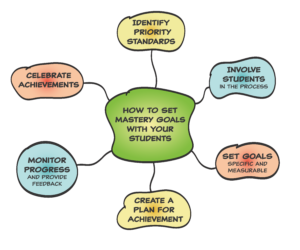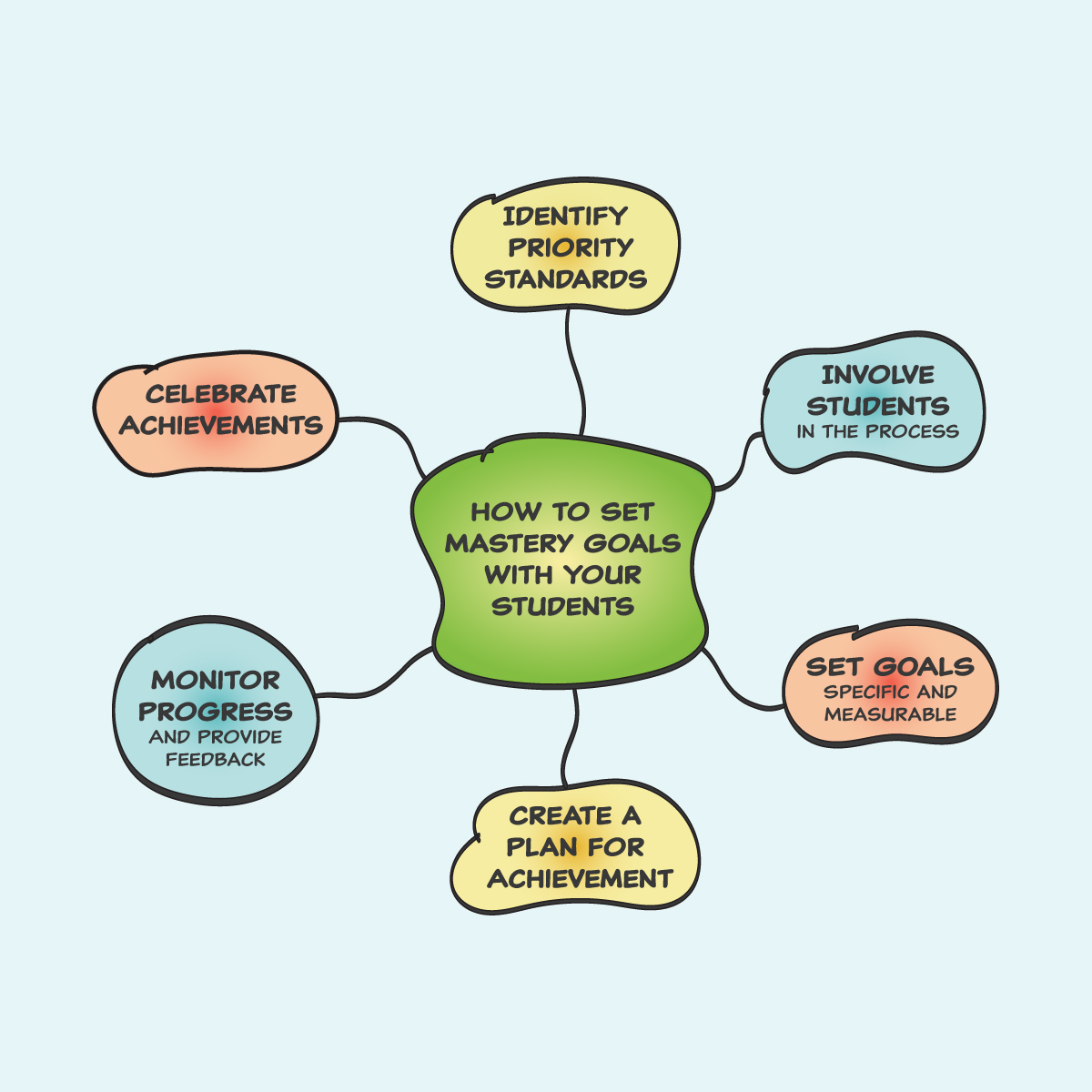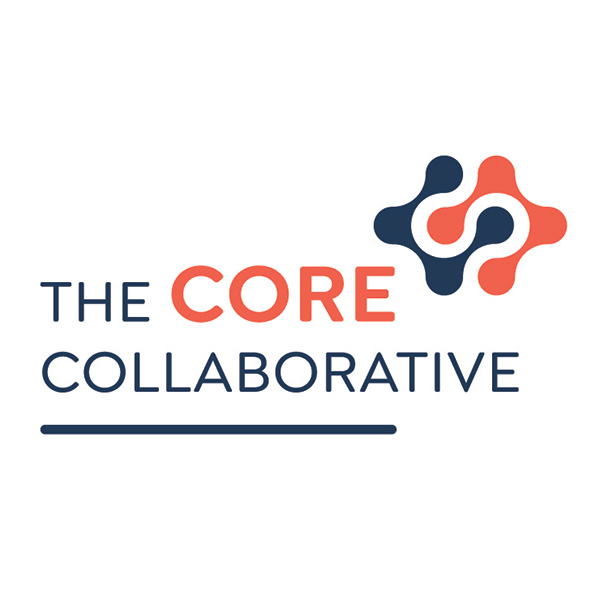Setting mastery goals with your students is essential in building a learning environment that emphasizes growth, understanding, and long-term success. When these goals are anchored in your Impact Team-PLC priority standards and vital prerequisite concepts-skills, they become even more powerful, driving both student learning and teacher efficacy. In this blog, we’ll explore what mastery goals are, how to set them with your students, and the benefits they bring in fostering a culture of efficacy and continuous improvement.
What Are Mastery Goals?
Mastery goals focus on acquiring and demonstrating competence or mastery in a particular subject area. Unlike performance goals, which emphasize outperforming others or achieving high grades, mastery goals center on understanding, skill development, and personal growth. When students set mastery goals, they aim to improve their knowledge and abilities, regardless of how their peers perform.
In the context of a PLC, mastery goals should be aligned with the priority standards identified by the community. These are the standards deemed most essential for student success, and they form the foundation of the curriculum and instructional strategies. By anchoring mastery goals in these priority standards, you ensure that students are working toward the most critical competencies in your subject area.
 How to Set Mastery Goals with Your Students
How to Set Mastery Goals with Your Students
- Identify Priority Standards: Start by clearly identifying the priority standards that your PLC has determined are most crucial. These standards will guide the focus of your mastery goals.
- Involve Students in the Process: Engage your students in setting their mastery goals. This process should be collaborative, with students reflecting on their current levels of understanding and areas where they want to improve. This ownership increases their motivation and commitment to achieving their goals.
- Set Specific and Measurable Goals: Mastery goals should be specific and measurable. For example, instead of setting a vague goal like “get better at math,” a mastery goal could be “demonstrate proficiency in solving quadratic equations by the end of the quarter.” This clarity helps students know exactly what they are working toward.
- Create a Plan for Achievement: Work with students to develop a plan for achieving their mastery goals. This plan should include steps they will take, resources they will use, and checkpoints for assessing progress. This structured approach helps students stay on track and adjust their efforts as needed.
- Monitor Progress and Provide Feedback: Regularly monitor students’ progress toward their mastery goals and provide constructive feedback. This ongoing support is crucial in helping students stay motivated and overcome challenges.
- Celebrate Achievements: Recognize and celebrate when students achieve their mastery goals. This recognition reinforces their efforts and encourages them to set new goals, fostering a cycle of continuous improvement.
In the context of a PLC, mastery goals should be aligned with the priority standards identified by the community.
Examples of Mastery Goals
These examples illustrate how mastery goals are specific, focused on skill development or understanding, and often tied to a clear timeline. Mastery goals also align with each unit of study. This is why priority standards must be repeated across the year since students have all year to master them. They are measurable, which helps both the student and teacher track progress and success.
Mathematics
- Algebra: “I will master solving quadratic equations by completing the square and be able to explain each step in the process by the end of the unit.”
- Geometry: “I will be able to prove and apply the Pythagorean Theorem to solve real-world problems involving right triangles within two weeks.”
English Language Arts
- Writing: “I will improve my essay writing by learning to construct clear, well-organized thesis statements and supporting arguments, and I will be able to draft an essay with these elements by the end of the month.”
- Reading: “I will develop my ability to analyze the themes and character development in a novel and write a comprehensive analysis essay by the end of the quarter.”
Science
- Biology: “I will understand and be able to explain the process of photosynthesis, including the light-dependent and light-independent reactions, and how they contribute to plant growth within three weeks.”
- Physics: “I will be able to calculate and explain the forces acting on an object in various scenarios using Newton’s Laws of Motion by the end of the next unit.”
Social Studies
- History: “I will be able to analyze and discuss the causes and effects of the American Revolution, and present an oral summary of my findings by the end of the semester.”
- Geography: “I will master the ability to interpret various types of maps and use them to explain the physical and cultural geography of a specific region by the end of the unit.”
Foreign Language
- Spanish: “I will be able to conjugate and use regular and irregular verbs in the past tense in both written and spoken Spanish conversations by the end of the term.”
- French: “I will be able to understand and use French vocabulary related to daily routines and activities in both writing and conversation by the end of the month.”
Art
- Drawing: “I will learn and apply shading techniques to create realistic 3D effects in my pencil drawings, and complete a final project showcasing these skills by the end of the unit.”
- Music: “I will master playing a specific piece on the piano, focusing on timing, dynamics, and expression, and perform it confidently by the end of the semester.”
Physical Education
- Fitness: “I will improve my cardiovascular endurance by being able to run a mile in under 8 minutes and maintain a steady pace throughout by the end of the month.”
- Team Sports: “I will develop my understanding of basketball strategies and demonstrate my ability to execute a pick-and-roll play during a game by the end of the season.”
Setting mastery goals with your students, anchored in your PLC priority standards and needed prerequisites, is a powerful strategy for fostering a culture of growth, resilience, and efficacy.
Taking Collective Action
Once teams have determined their SMARTIE goals they will need to create a plan to gather evidence of their grade level or course’s mastery goals. Consider using this Impact Team Mastery Goal Spreadsheet to track your students’ progress toward mastery. Just duplicate the example for your course or grade level so each teacher has a tab. Then determine your mastery goals based on your priority standards and student needs. Use multiple data points to determine what goals are most important to master. Keep in mind that many students may need to master prerequisites; these goals will be just as important for students to master. Create a plan to gather evidence on 3-5 mastery goals across the year. Make sure that your evidence collection correlates to the goals of each unit.
The Benefits of Mastery Goals in Growing Efficacy
Setting mastery goals is not just about academic achievement; it’s also about building students’ self-efficacy—their belief in their ability to succeed. Here are some key benefits of mastery goals in growing efficacy:
- Enhanced Motivation: Mastery goals focus on learning and improvement, which can be more intrinsically motivating than performance goals. When students see learning as a personal journey, they are more likely to engage deeply and persist in the face of challenges.
- Increased Resilience: Students with mastery goals are better equipped to handle setbacks because they view challenges as opportunities to learn rather than threats to their self-worth. This resilience is critical in developing a growth mindset.
- Improved Learning Outcomes: Because mastery goals are aligned with priority standards, they ensure that students are working toward the most important competencies. This alignment leads to better learning outcomes and a stronger foundation for future success.
- Fostering a Growth Mindset: Mastery goals emphasize effort, learning, and growth, which are key components of a growth mindset. Students who set and achieve mastery goals are more likely to believe that their abilities can be developed through hard work and dedication.
- Strengthening Teacher Efficacy: As students achieve mastery goals aligned with PLC priority standards, teachers see the impact of their instruction. This success boosts teacher efficacy, as educators feel more confident in their ability to help students learn and grow.
- Promoting Equity: Mastery goals ensure that all students, regardless of their starting point, are working toward meaningful learning outcomes. This focus on individual growth helps to level the playing field and promotes equity in the classroom.
Fostering Growth and Resilience
Setting mastery goals with your students, anchored in your PLC priority standards and needed prerequisites, is a powerful strategy for fostering a culture of growth, resilience, and efficacy. By focusing on what matters most—deep conceptual understanding and skill development—you help students build the confidence and competence they need to succeed. As students achieve these goals, they not only improve academically but also develop the self-belief and motivation that will carry them through future challenges. In turn, this success reinforces your role as an effective educator, creating a positive feedback loop that benefits both students and teachers alike.
Mastery goals are more than just academic targets; they are a lifeline to every student’s potential. When we shift our focus from mere performance to true understanding, we give our students the gift of believing in their ability to grow, overcome challenges, and thrive. These goals empower students to see themselves not just as learners, but as capable, resilient individuals who can achieve greatness. Let’s give our students the chance to master not just the content, but their futures.
Say YES to revolutionizing your PLCs!
Join our learner-centered PLC community where we put students in the driver’s seat! Our innovative collaborative inquiry approach empowers students and teacher teams through reflective practices and goal setting fostering a culture of efficacy and agency



